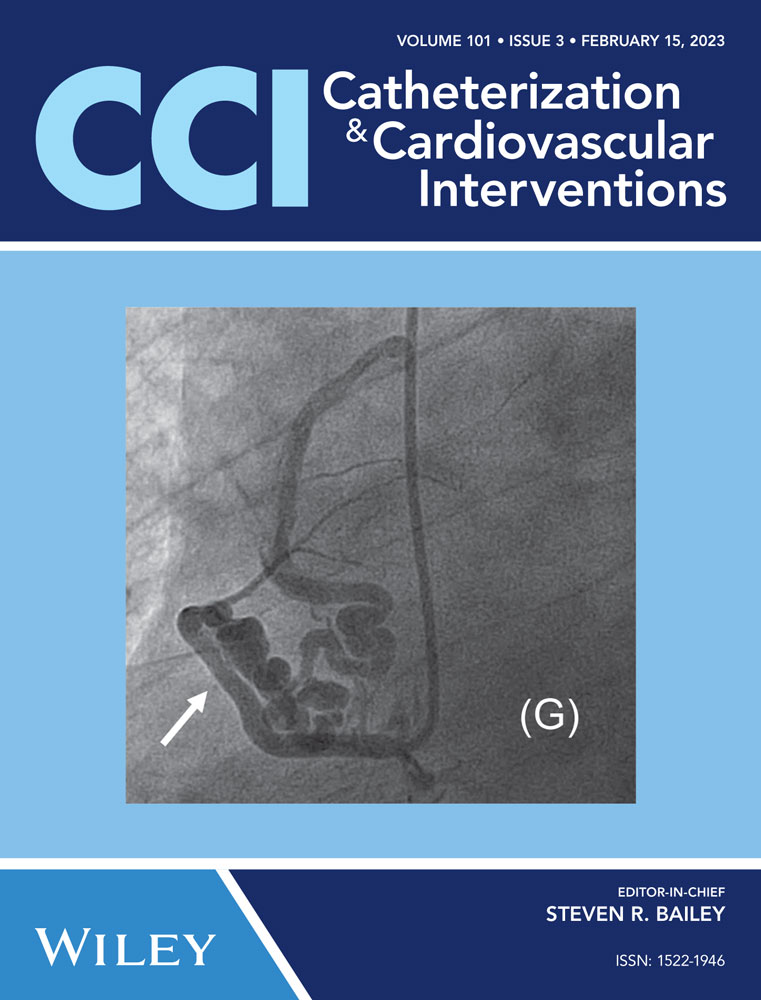Society of thoracic surgeons risk score and left atrial pressure for predicting clinical outcomes among transcatheter mitral edge-to-edge repair patients
Abstract
Background
Limited data exist regarding the performance of the Society of Thoracic Surgeons (STS) risk score among transcatheter mitral edge-to-edge repair (TEER) patients.
Objective
Evaluate STS score accuracy, and the incremental value of post-procedural left atrial pressure (LAP).
Methods
A retrospective analysis of TEER patients between 2013 and 2020. Patients were allocated into 3 groups: high (≥8% [n = 298, 31%]), intermediate (4%−8% [n = 318, 33%]), and low (<4% [n = 344, 36%]). Primary outcomes included 1-year mortality or cardiovascular hospitalizations. Cox proportional hazards regression modeling was used to determine the hazard ratio of the primary outcome, and STS score accuracy was assessed by receiver operating characteristic. A spline curve was used to display the relationship between LAP and the primary endpoint. Continuous net reclassification improvement (NRI) was used to determine the incremental value of LAP.
Results
We included 960 patients, primarily elderly (79 [70−85]), with a median STS risk of 5.6 (3−9). High-risk patients were older (83 [75−89], 81 [74−87], 72 [64−79], p < 0.001), and had more comorbidities compared to intermediate and low-risk groups. Upon Cox regression, STS score (high vs. low: HR 2.5 [1.7−3.8]; Intermediate vs. low: HR 1.8 [1.2−2.7] and LAP HR 1.03 [1.01−1.06], p = 0.007) were associated with the outcome. C statistics analysis revealed low accuracy of the STS score (AUC-0.61 [0.58−0.65, p < 0.001]). Continuous NRI analysis indicated an improvement in risk prediction of 17% (6.9−26.2), p < 0.001.
Conclusion
STS risk score has low accuracy in predicting clinical outcomes after TEER. Adding LAP measurements can improve reclassification and identify those prone to adverse outcomes.
CONFLICTS OF INTEREST
Dr. Makkar has received grant support from Edwards Lifesciences Corporation, is a consultant for Abbott Vascular, Cordis, and Medtronic, and holds equity in Entourage Medical. Dr. Chakravarty is a consultant, proctor, and speaker for Edwards Lifesciences and Medtronic, a consultant for Abbott Lifesciences, and a consultant and speaker for Boston Scientific. The remaining authors declare no conflict of interest.




